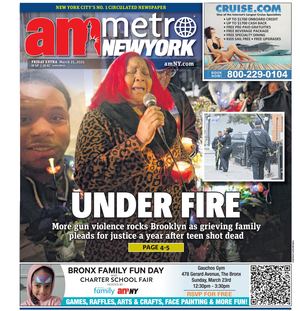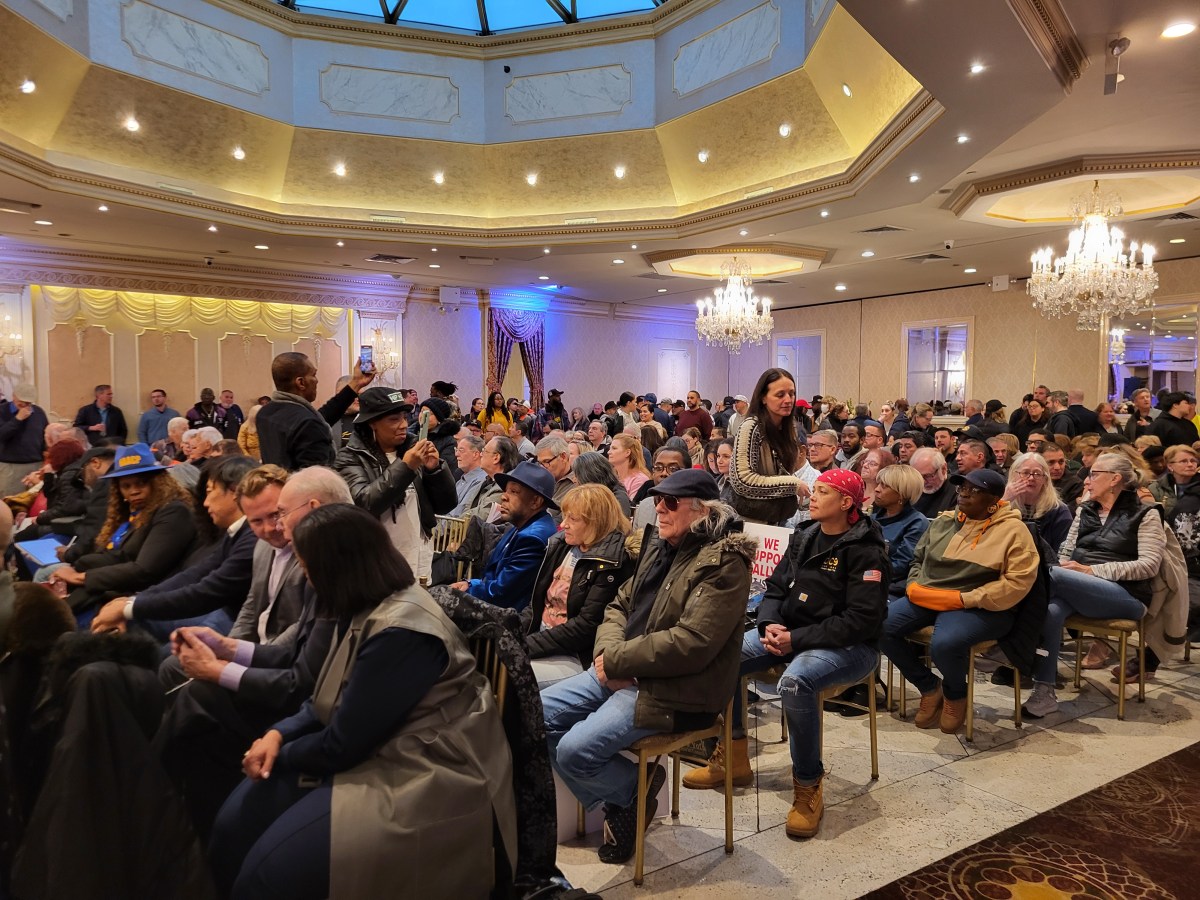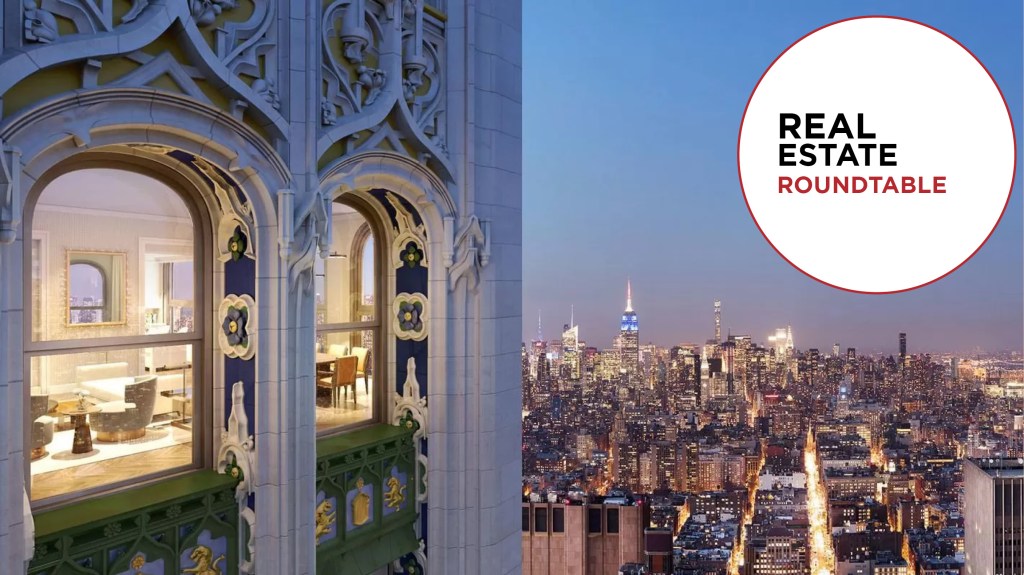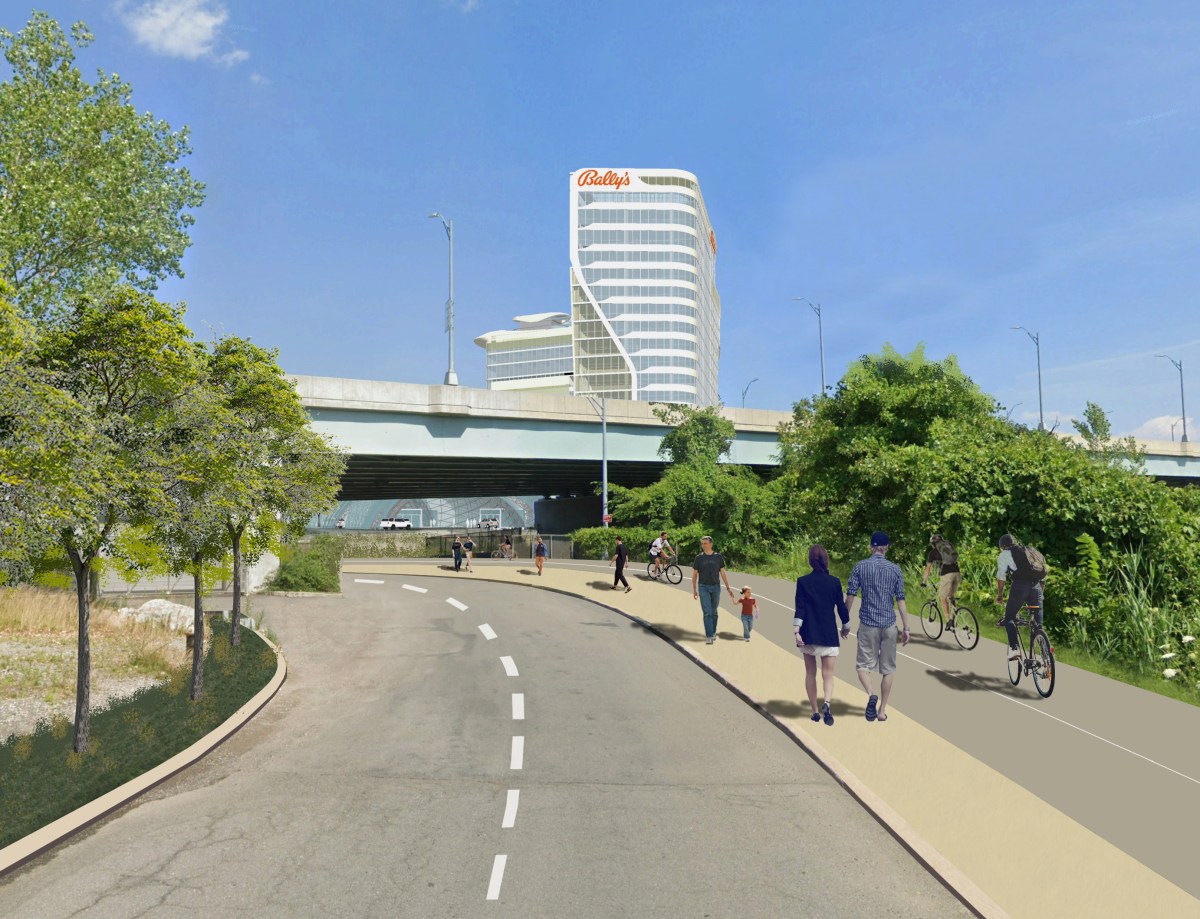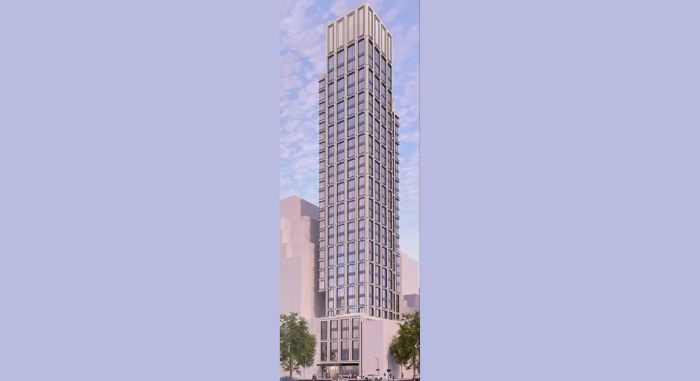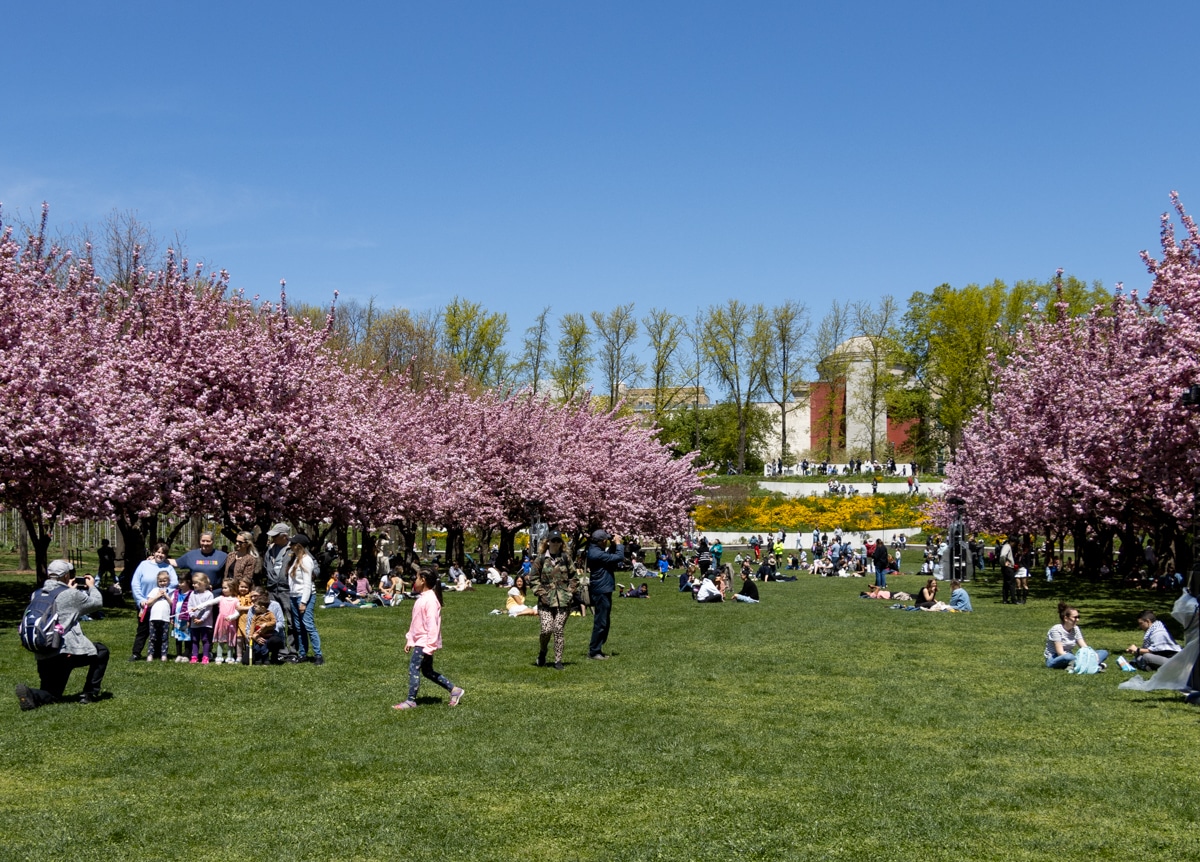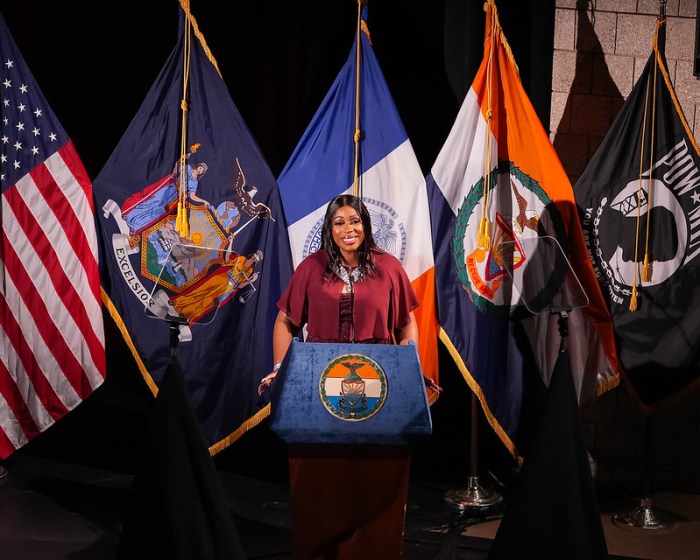
BY JACKSON CHEN | Interior spaces of One United Nations Plaza got their first public hearing on November 22 for possible designation by the Landmarks Preservation Commission.
The commissioners are considering the lobby reception area, vestibule, and hallway as well as the Ambassador Grill dining and bar areas of the ONE UN New York Hotel building, formerly known as the United Nations Hotel, for interior landmark designation. The building is on East 44th Street, just west of First Avenue. Both the Ambassador Grill, which was completed in 1976, and the hotel’s lobby, completed in 1983, were designed by Kevin Roche John Dinkeloo and Associates, an architecture firm based in Connecticut.
Those in support of the landmarking have said that the postmodern interiors were the work of “a master in his prime,” with Roche, who is now 94, bathing the space in a kaleidoscope of reflective surfaces that embody a glitzy, disco ball aesthetic.
Preservationists sounded the alarm once they learned that the building’s owner, Millennium Hotels, had plans to alter the space. Theodore Grunewald, a veteran of many Manhattan preservation fights, soon stepped up to save the hotel’s lobby and the Ambassador, working with an informal group of activists, Save the Grill.
“Very few hotels have as distinctive as an interior as this does,” Grunewald said, describing the space as Pablo Picasso in 3-D. “It has very distinctive marble and mirrored columns, sort of a cubist’s abstraction of a column.”
Grunewald found allies in Docomomo US, a nonprofit organization dedicated to preserving modern architecture nationwide. In January of this year, Docomomo’s executive director, Liz Waytkus, filed a request for evaluation for the hotel interiors with the LPC. According to Grunewald, there was evidence of minor alterations underway before the LPC calendared the interiors on September 20.
At the November public hearing, architects and preservationists described the interiors as unique and meritorious.
“The design is a reflection of a time in American history of deep cultural change,” Waytkus said. “The Roche Dinkeloo interiors uniquely capture that moment and offer a road map that will continue to influence future design in New York and beyond.”
Preservation advocates raised a question as to why the LPC excluded a lounge area adjacent to the lobby for landmark consideration.
Waytkus said that omission would impair the public’s ability to enjoy and understand the space and strongly urged the LPC to include it into their bundle for consideration.
A representative from Roche’s firm voiced concern about what he described as the breaking up of a cohesively designed space.
“After reviewing the LPC drawing showing the lobby space being divided in two parts, we are concerned about the boundary being proposed,” Wes Kavanagh, design principal at Kevin Roche John Dinkeloo and Associates, said. “This is one architectural space and should be designated as such.”
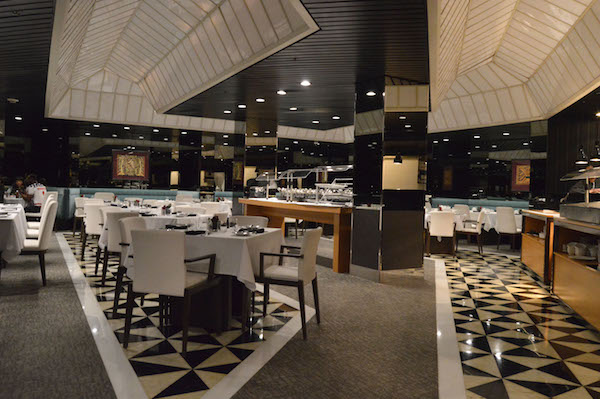
LPC research staffers explained that after surveying the entire interior level, they felt that since the lounge and seating area was separated by columns and a change in grade from the lobby and had fewer distinctive features, it wasn’t strong enough to include in the package of interior landmarks they put before the commission.
Grunewald said he believed the LPC’s exclusion of the lounge area was an accommodation to Millennium Hotels and added he would continue his effort to have it included in the overall package under consideration.
“We feel strongly that even if the lounge were repurposed for another function, it would still be able to utilize the original décor of Kevin Roche’s architecture,” Grunewald said.
The commissioners ultimately chose not to vote after the public hearing and instead sought additional research from LPC staff before revisiting the item on a date not yet set.
Millennium Hotels, through a spokesperson, indicated it would not comment on the landmarking consideration.
